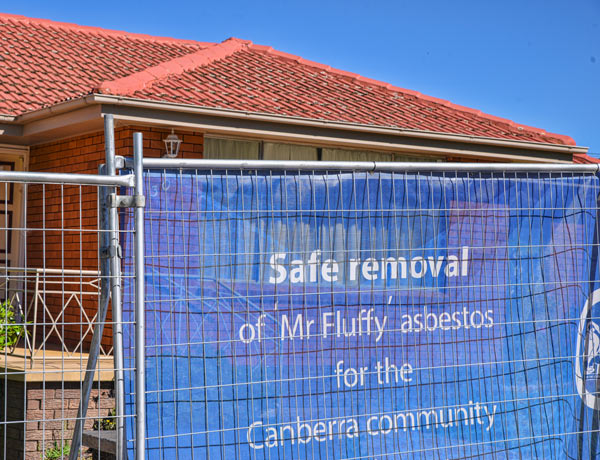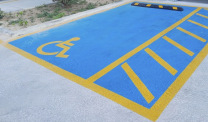Asbestos in Australian Homes, Drinking Water a Concern
Awareness & ResearchWritten by Lorraine Kember | Edited By Walter Pacheco

One could describe asbestos as an unrelenting monster.
About 125 million people in the world are exposed to asbestos at the workplace each year, according to the World Health Organization.
Responsible for more than 100,000 deaths worldwide each year, asbestos has been around for a very long time and is not going away any time soon.
Why? Because it is virtually indestructible.
Asbestos is a generic name given to a group of fibrous silicate materials that occur naturally in the environment. It is the only naturally occurring mineral that can be spun and woven in much the same way as cotton or wool.
It is hazardous to health when its microscopic fibers are released into the air. In my home of Australia, crocidolite (blue asbestos) was the most widely used type in construction. It also is the deadliest type of asbestos.
When inhaled or ingested, these fibers can cause asbestosis, lung cancer and mesothelioma cancer.
Asbestos Use in Australia
Because asbestos’ remarkable resistance to heat, fire, chemicals and weather, it was hailed as a miracle product and used extensively by the Australian building industry from the mid 1940s through to the 1980s.
During this time, it was commonly used in the production of more than 3,000 different products, including fibro asbestos sheeting, flue pipes, insulation, fireproofing, textile and cloth products, asbestos cement pipes, drains, roofs, gutters, brakes, clutches and gaskets.
In the 1980s, growing awareness of the health effects of asbestos saw it phased out in favor of non-asbestos materials.
By 1985, corrugated asbestos products such as roofing and cladding was taken out of production. But it wasn’t until 2003 that the Australian government issued a comprehensive ban on the manufacture, use, importation, transport, storage and sale of all forms of asbestos.
The Deadly Legacy of Asbestos
Although asbestos-building products are no longer used in Australia, there are thousands of older homes and businesses across the country that contain asbestos, predominantly in the form of fibro asbestos sheeting that over time has become a ticking time bomb.
Any damage to walls, roofs and fencing constructed from fibro sheeting can release deadly asbestos fibers into the environment and the lungs of unsuspecting victims.
Fortunately, because of the diligence of those working to educate the public about asbestos, unprotected exposure to it can often be avoided.
But what of the asbestos risk we cannot see?
Beneath our feet, here in Australia, there are thousands of miles of water pipes, many of which were produced by James Hardy, Australia’s largest manufacturer of asbestos.
Constructed of a matrix of cement and blue asbestos fibers, the pipes — which have been underground for up to 70 years — are located throughout Australia.
The concern: The cement holding the deadly asbestos fibers in place is rapidly wearing out.
Concerns About Drinking Water
Tanya Segelov of the Asbestos Safety and Eradication Agency doesn’t think the millions of aging water pipes containing asbestos cement has contaminated drinking water. She says there is no evidence to prove otherwise.
The Water Services Association of Australia (WSSA) are of the same opinion, however, they considered removing toxic pipes that span nearly 25,000 miles across the country.
If removal and replacement of the pipes moves forward, it is estimated to cost consumers up to $8 billion.
Until a decision is made, the WSSA are closely monitoring how the pipes are holding up and compiling best practice procedures in the disposal of asbestos to minimize public health risks.
One can only hope that the pipes are replaced before it is too late.
Asbestos in Drinking Water a Problem in U.S. and Canada
The National Water Quality Management Strategy for Australian Water Guidelines, released August 2018, is hardly reassuring.
Studies in the United States and Canada have reported typical asbestos fiber numbers in drinking water of less than 1 MFL (million fibers per liter). Severe deterioration of asbestos cement pipes has been known to produce fiber numbers of up to 2,000 MFL.
Australian drinking water supplies have not been routinely monitored for asbestos. However, fiber numbers are probably similar to those reported overseas.
These numbers can be reduced by the standard water treatment processes of coagulation and filtration.
Unfortunately, there is nothing we can do about the drinking water that comes through our taps, but there is something we can do to protect our health when capturing rain water in our backyard water tanks. If the water has flowed across areas of the roof that have previously become friable, it may contain deadly asbestos fibers.
If you know or suspect your roof may contain asbestos, you should not be drinking the water from your rain tank before first having the roof, piping and gutters checked by a qualified asbestos detection and removal service.






